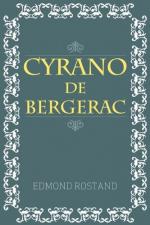|
This section contains 771 words (approx. 2 pages at 400 words per page) |

|
Romanticism
Rostand idolized the writer Savinen de Cyrano de Bergerac (1619-1655) and, in creating a fictional account of his life, embellished on one of France's most colorful literary figures. The real de Bergerac was indeed both a soldier and a writer, but Rostand added one distinguishing element: a very large nose. While Cyrano's nose is first seen as a comic prop, his romantic heart and heroic stature quickly change that perception. Those familiar with the play see Cyrano's nose as a symbol of his undying love and devotion.
Cyrano de Bergerac falls very easily into the genre of Romanticism. That term is generally defined as "any work or philosophy in which the exotic or dreamlike figure strongly, or that is devoted to individualistic expression, self-analysis, or a pursuit of a higher realm of knowledge than can be discovered by human reason." Cyrano is, beyond anything else, an individual. From...
|
This section contains 771 words (approx. 2 pages at 400 words per page) |

|




